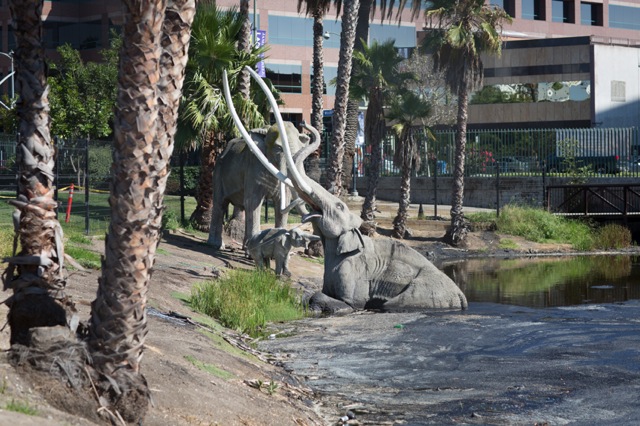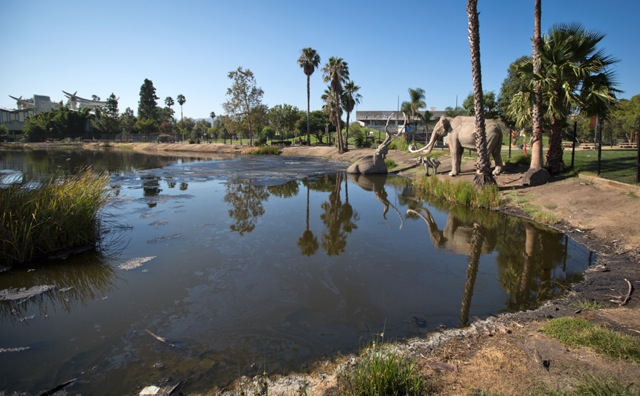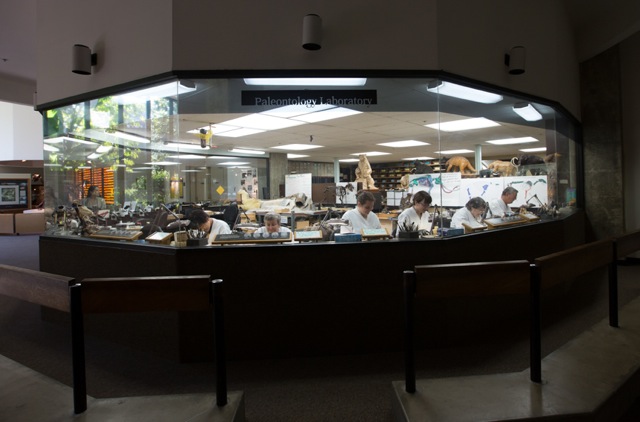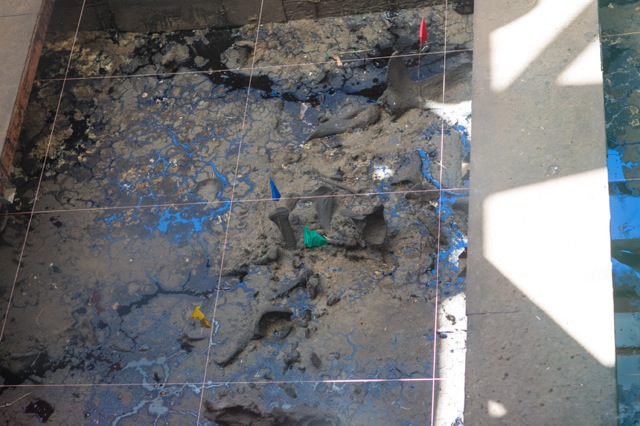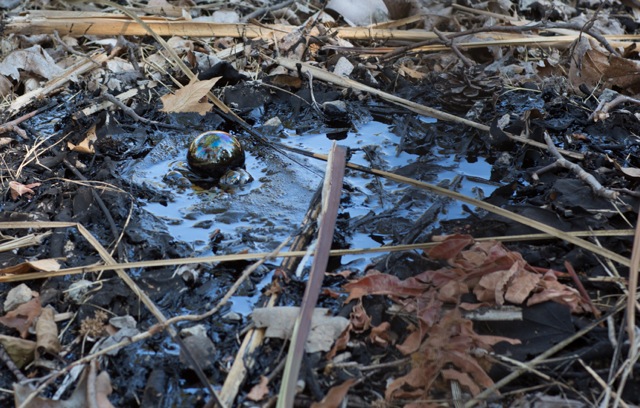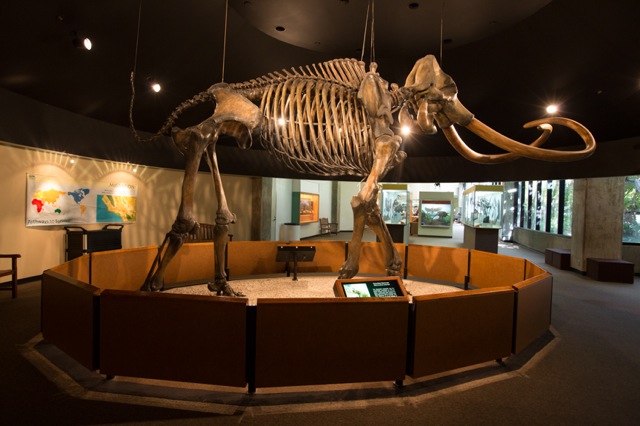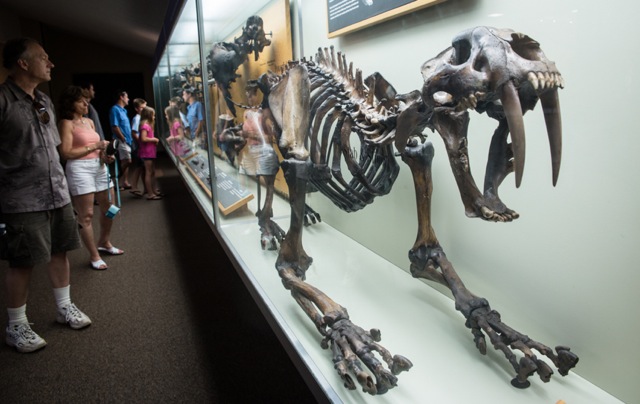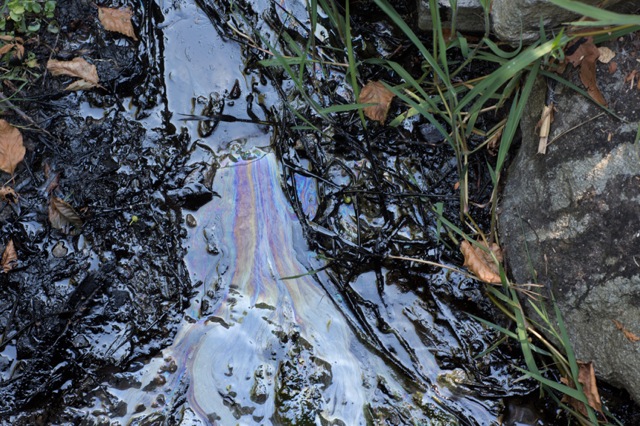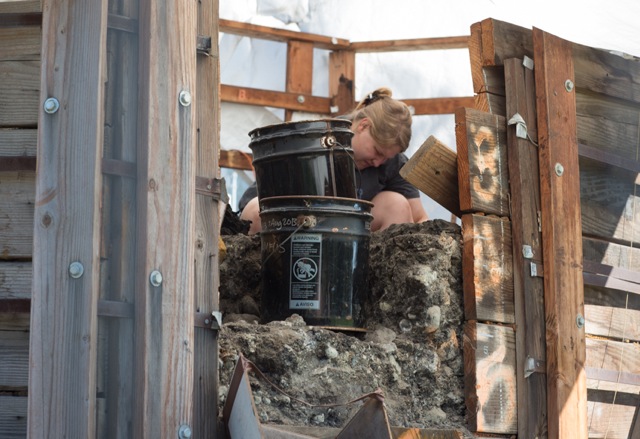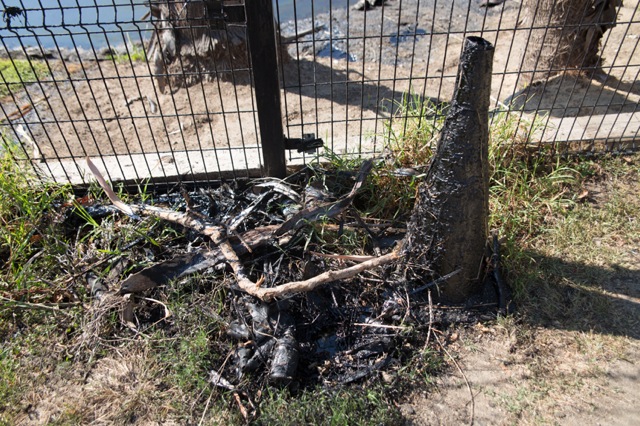The La Brea Tar Pits, situated in the middle of Hancock Park in Los Angeles, are a petroleum reservoir on the southern edge of the Salt Lake Oil Field.
Working oil wells are scattered throughout the area, hidden in plain sight. Bitumen oozes and bubbles to the surface daily and traps any animals that make their way into the thick tar pits by mistake.
Bitumen also occasionally makes its way into nearby sewers, sidewalks and basements, straying from the confines of the park that was donated to the city by Captain G. Allan Hancock.
The pits were formed by crude oil seeping through fissures in the Earth’s crust and evaporating into the air, leaving bitumen on the surface. The smell of aromatic hydrocarbons lingers in the air, noticeable from the nearby busy intersection of Wilshire and Beverly, and gets stronger the closer you get to the largest pit where replicas of wooly mammoths appear to be stuck in time, one half submerged in the pit. The replicas are a reminder of reality, as the pits still contain the remains of many animals that have been caught in the bitumen over time.
LaBrea Tar Pits with wooly mammoth replica stuck in Tar:
The world’s largest, most diverse collection of late Pleistocene fossils has been preserved in the La Brea Tar Pits. Some of the species recovered include a saber-toothed cat, bear, lion, wolf, camel, bison, and mastodon. The fossils are of immeasurable scientific value. They are packed with DNA and information as to what climate change may bring. Many of the fossils are housed near the pits at the George C. Page Museum, where paleontologists continue to work on the specimens.
Paleontology laboratory at the Page Museum allows the public to view work as it is being done on fossils found in the La Brea Tar Pits:
The La Brea Tar Pits contain a wealth of scientific information that is still being mined. Dig sites are scattered about the park where visitors can watch paleontologists at work from observation stations. A visit to the park and museum brings natural history to life.
View from an observation platform in Hancock Park where visitors can watch paleontologists extract bones from the tar pits:
The La Brea Tar Pits show how the environment left alone adapts very well to bitumen deposits. Life is teeming in and around Hancock Park. It is only once bitumen is processed, lethality factors in. And all bitumen moved through pipelines is processed. Emulsifiers are added to it so the bitumen can flow. Processed bitumen when spilled contaminates everything at a spill site. It is yet to be determined if a spill site will ever be able to adapt to the diluted bitumen in a productive way.
Methane bubbling up in one of the LaBrea Tar Pits in Hancock Park:
Columbian Mammoth skeleton recovered from the LaBrea Tar Pits:
Visitors at the Page Museum in front of a Saber-toothed tiger skeleton recovered from the LaBrea Tar Pits:
Sheen coats the surface of bitumen pool in Hancock Park:
Paleontologists working on site in one of the the LaBrea Tar Pits in Hancock Park:
Bitumen rises from beneath the ground outside the fenced off perimeter in Hancock Park:
Photo credits: ©2013 Julie Dermansky
Subscribe to our newsletter
Stay up to date with DeSmog news and alerts


